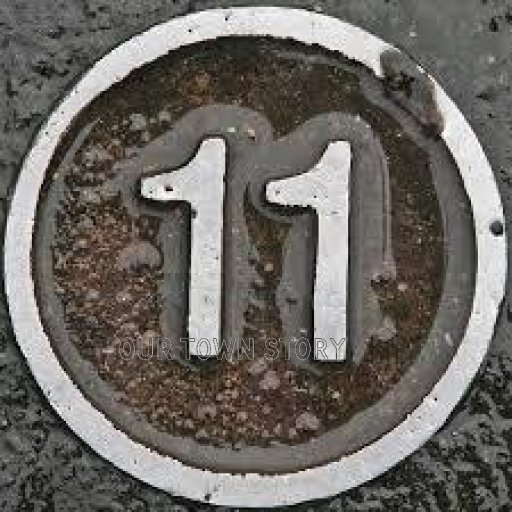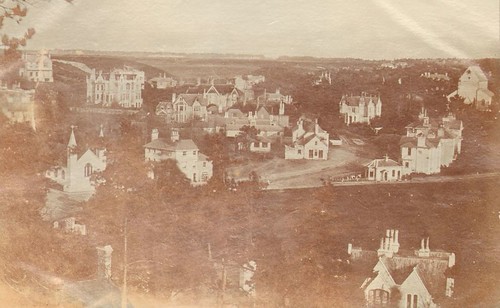
About
Co-founder of Our Town Story. If you have any questions about the site, or wish to provide feedback, please visit the Admin forum and post in the appropriate place - we'll do our best to help you out as quickly as we can!
We really want Our Town Story to be an album for your old photos, to fill in the gaps in the history books of our villages, towns and cities. We would also love for those pictures to be able to help others - for instance by using reminiscence therapy in treating dementia .
We're still a work in progress, and we appreciate all suggestions and observations!
Profile Stats:
Members do not see ads
The View From Terrace Mount, Bournemouth, c. 1860
The View From Terrace Mount, Bournemouth, c. 1860
Flickr User: BOURNEMOUTH GRANT
Members do not see ads
Flickr Image Description
There are no images of the town taken before 1860 although there are a number of engravings, drawings and paintings.
A.
This original St Andrews Church was built from corrugated iron sheet over a wooden frame on this site in 1857, and was known as the Scotch Church. This method of construction was a relatively cheap and cheerful way of providing a variety of community buildings such as churches, scout huts and village halls, popular in Victorian times.
It was replaced by this stone building in 1872.
In 1888 Central Chambers, that housed the Mansion Hotel was built, which became the Empress Hotel in 1906.
Various commercial premises occupied the ground floor, most noteably the Cadena Cafe, part of a national chain.
In 1930 the Cadena Cafe was replaced by the National and Provincial Bank who expanded their premises from next door, which they had occupied since 1879.
In 1968, after a merger, the bank became the National Westminster Bank [ Nat West ], who still occupy the buildings today.
The Empress Hotel closed in 1953, with the name transferring to the Osborne Hotel on Exeter Rd.
B.
In 1848 Beckford House was built here as the home of George Fox who had leased the nearby Tregonwell Arms from Henrietta Tregonwell in 1837.
In 1839 the pub was appointed an official receiving office with George Fox as postmaster. He purchased the inn in 1840 and transferred the post office services to Beckford House in 1848.
In 1881 Beckford House was replaced by a tall building with a shop on the ground floor and offices above.
It was replaced by this building in 1963 which has been home to the Alliance and Leicester, now Santander, in one or other of its guises, since.
C.
A side view of the Tregonwell Arms that was built in 1809 as the Tapps Arms. It was rebuilt or remodelled as the Tregonwell Arms in 1812.
It was leased to George Fox in 1837 and became an official receiving office for post in 1839, with George Fox becoming postmaster.
He purchsed the property in 1840, later transferring the postal services to his home, Beckford House, in 1848. In later years it became a temperance coffee house until it was demolished in 1885.
The site is now the junction of Old Christchurch Rd and Post Office Rd.
D.
Lainston Villa was built around 1850 at the junction of Exeter Rd and Exeter Lane, adjacent to the Square. It became the home of Christopher Crabbe Creeke who's work as an architect and surveyor had brought him to Bournemouth in 1852.
Quickly recognised as a man with considerable skills within in his chosen field, he was appointed the town's surveyor and inspector of nuisances by the team of Commissioners who were formed when the Bournemouth Improvement Act was passed by Parliament in 1856.
As the large villas had been springing up amongst the pines around the mouth of the Bourne stream and the surrounding area, it was felt that some form of cohesion was required to provide better streets, drainage, sewers, street cleaning and other services.
A town boundary was set as being within a one mile radius from what is today's Pier Approach.
The Commissioners, in effect the town's first Council, had the power to raise funds by way of property rates, something akin to the council tax we pay today.
As the town surveyor, Creeke was responsible for overseeing the civil engineering projects that resulted in the laying of the sewers and the layout of new roads.
The Commissioners initially held their meetings at the Belle Vue Hotel that stood overlooking Pier Approach, but from 1857 until 1875 Creeke rented space in his home, Lainston Villa, to the Commissioners to hold their meetings.
Creeke died in 1886, having become a Commissioner himself in 1883, and was buried in the Wimborne Rd Cemetery at Cemetery Junction, for which he had designed the chapel as well as the layout of the cemetery itself.
Lainston Villa became Lainston Lodge, a dental surgery in the latter 1800s before being converted into Treadgold's, later Williamson and Treadgold's ' Garden Tea House'.
Williamson and Treadgold ran a chain of grocers stores locally and were amongst the first tenants in the Hampshire Centre in 1968.
It was demolished in 1930 to make way for the new Exeter Rd bus station that opened in 1931. The main entrance to the bus station was created where Lainston Villa had stood. Today it is where the pedestrian entrance to the Exeter Crescent car park is opposite the 'Moon In The Square' pub.


